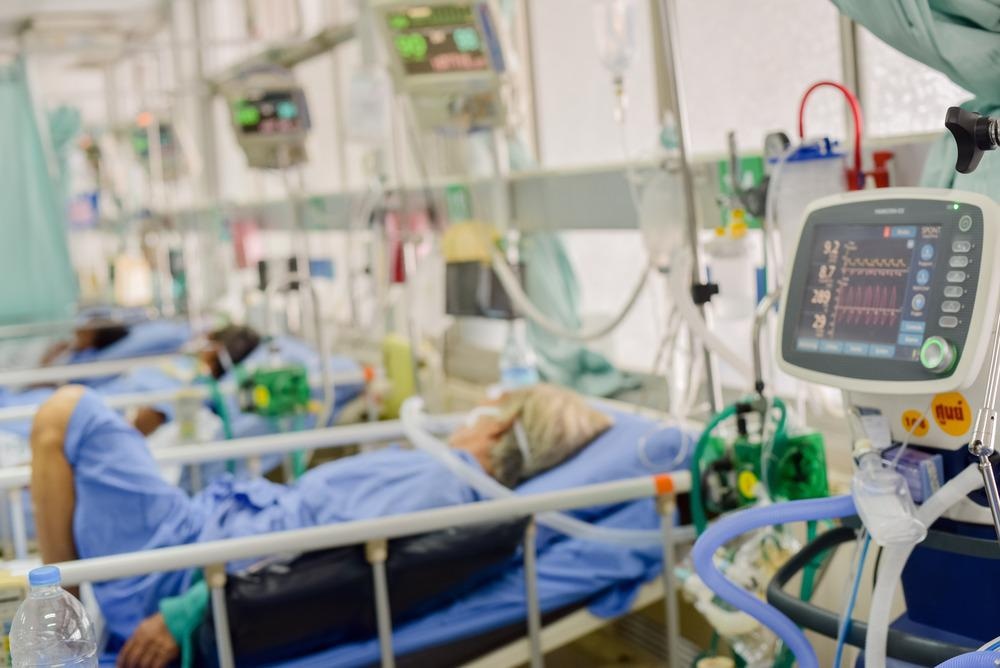Cancer patients have always been at a higher risk of developing severe coronavirus disease 2019 (COVID-19) due to underlying malignancies undermining the immune system and the common use of immunosuppressant treatments in these patients. Many patients and healthcare workers have had to make difficult decisions to delay or halt chemotherapy in order to better treat COVID-19 in these patients.
In a recent Health Science Reports study, researchers investigate the risk factors present in individuals suffering from hematological malignancies and COVID-19.

Study: Hematologic malignancies and COVID-19 infection: a monocenter retrospective study. Image Credit: Chaikom / Shutterstock.com
About the study
The current study was conducted in Taleghani hospital and involved the analysis of the medical history, comorbidities, chemotherapeutic regimens, and phase of hematologic treatment in patients. Patients with histories of allogeneic or autologous hematopoietic stem cell transplantations, as well as patients with other explanations for pneumonia, were excluded from the current study.
All patients were required to have undergone a computed tomography (CT) scan to confirm COVID-19 pneumonia. Laboratory tests were also performed to collect data for complete blood count (CBC), hepatic and renal function, erythrocyte sedimentation rate (ESR), C-reactive protein (CRP), as well as other inflammatory markers such as lactate dehydrogenase (LDH).
The enrolled patients had a variety of diseases and were thus divided based on their treatment phases. These phases included preinduction, induction, consolidation, maintenance, and refractory.
Some of the diseases these patients had included acute myeloid leukemia (AML), acute lymphoid leukemia (ALL), Hodgkin’s and non-Hodgkin’s lymphoma, multiple myeloma, myelodysplastic syndromes, hairy cell leukemia, and hemophagocytic lymphohistiocytosis.
Any patient in the preinduction phase was eligible to start chemotherapy but had not yet due to COVID-19. Comparatively, those in the induction phase were receiving chemotherapy when they became positive for COVID-19.
The consolidation phase included AML or ALL patients who were in remission, as well as patients who had recently received chemotherapy and were diagnosed with cytopenia. The maintenance phase included remission patients receiving long-term chemotherapy. Finally, the refractory phase included patients who were not responsive to any type of chemotherapy and were still experiencing active disease.
The endpoints of the current study included the frequency of COVID-19, admission to the intensive care unit (ICU), therapies received, patient outcome, length of hospital stay, and any change in pre-existing comorbidities. Quantitative and qualitative data were presented as mean, median, and frequency.
Study findings
A total of 194 hospitalized patients with hematological malignancies and COVID-19 were included in the current retrospective study. Logistic regression models were created, which showed that the strongest predictor of death was ICU admission, with patients admitted to the ICU being 23.35 more likely to die than others.
While some studies have shown that men are more likely to suffer from severe COVID-19 as compared to women, this does not appear to be the case in patients suffering from hematological malignancies. In fact, women were 3.48 times more likely to die than men. Age was also associated with an increased risk of death, whereas the length of hospital stay was associated with a reduced risk of death.
Several different inflammatory markers were associated with mortality in different diseases. For example, ESR was associated with an increased risk of death in ALL, myelodysplastic syndromes, hairy cell leukemia, and hemophagocytic lymphohistiocytosis patients.
Comparatively, higher LDH levels were associated with an increased risk of death in lymphoma and multiple myeloma patients. Increased ferritin levels were also a significant indicator of death in multiple myeloma patients.
Higher fibrinogen levels were associated with higher mortality rates overall. Furthermore, high ESR, LDH, and fibrinogen levels were associated with lower oxygen saturation.
Conclusions
Several different risk factors were identified among patients with hematological malignancies who are subsequently infected with SARS-CoV-2. The identification of these risk factors could help improve hospital triage and better inform healthcare workers on which subset of patients with certain hematological malignancies are at an increased risk of severe COVID-19 and death.
Journal reference:
- Tehrani, H. A., Ramezaninejad, S., Mardani, M., et al. (2022). Hematologic malignancies and COVID-19 infection: a monocenter retrospective study. Health Science Reports 5(3). doi:10.1002/hsr2.638